#james c. scott
Explore tagged Tumblr posts
Text
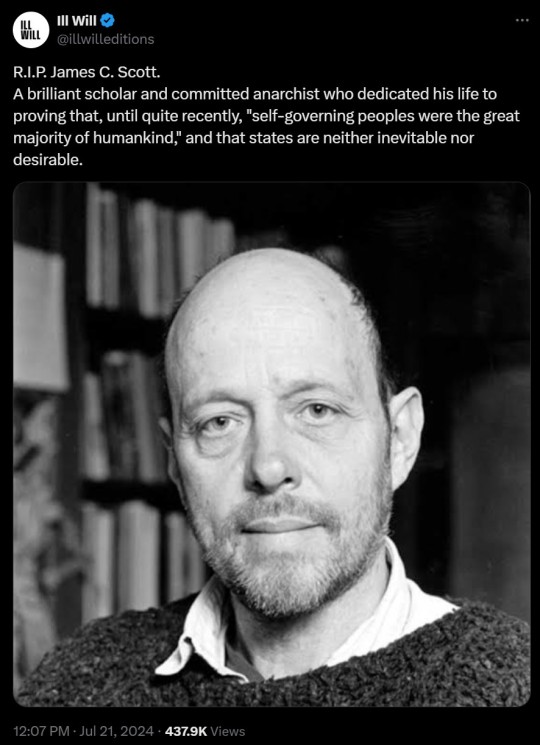
Someone whose work I greatly appreciated and would suggest you (oh dear reader) seek out and read. In simplest terms, Scott explored the avenues in which people resisted and evaded authority and hierarchical systems of control. A good part of his scholarship involved trying to understand peasantry, one the largest "classes" in the world. Coupled to that was the study of subsistence economies and how people involved in those economies work around impositions made by State actors (and non-state actors). This led to a larger exploration of the above mentioned resistance and the various forms that this resistance took around the world. He also explored the relationship between State and non-state peoples. "What I learned is that centralised revolutionary movements have almost always resulted in a State that was more oppressive then the ones they aimed to replace. In other words, when the revolution becomes the State, it becomes my enemy again. That is why it matters greatly which methods are used in order to achieve power. .... "I am the enemy of hierarchical movements of opposition because I think they replicate State structures in their own organisation."
If you would like some suggestions that offer a peak into Scott's scholarship interests (which are similar to my own), here's some videos for you to peruse (if you have the time): 1. A Short Account of the Deep History of State Evasion 2. Beyond the Pale: The Earliest Agrarian States and “their Barbarians” 3. The Art of Not Being Governed 4. The Domestication of Fire, Animals, Grains and…….Us (Later) Edit: Some revelations concerning Scott's involvement with the CIA in the early 1960s in their anti-Communist activities has come out after his recent death that complicates his legacy as a "radical scholar". Take that for what you will. I haven't been able to find a great deal of detail about that involvement and the revelations here aren't exactly new but people have decided to highlight that relationship in the wake of Scott's passing as a way to discredit or cast a shadow over his later anti-statist research. I just wanted to note this. (Even Later) Edit: The Oral History Center at UC Berkeley released a documentary on Scott called In A Field All His Own: The Life and Career of James C. Scott. Just in case you wanted more Scott related material.
#James C. Scott#seeing like a state#the art of not being governed#anarchism#academia done right IMO#history#anthropology#social history
468 notes
·
View notes
Text
Those with power [...] may write the basic script for the play but, within its confines, truculent or disaffected actors find sufficient room for maneuver to suggest subtly their disdain for the proceedings. The necessary lines may be spoken, the gesture made, but it is clear that many of the actors are just going through the motions and do not have their hearts in the performance. A banal example, familiar to any motorist or pedestrian, will illustrate the kind of behavior involved. The traffic light changes when a pedestrian is halfway across the intersection. As long as the pedestrian is not in imminent danger from the oncoming traffic, a small dramatization is likely to ensue. He lifts his knees a bit higher for a step or two, simulating haste, thereby implicitly recognizing the motorist's right-of-way. In fact, in nearly all cases, if my impression is correct, the actual progress of the pedestrian across the intersection is no faster than it would have been if he had simply proceeded at his original pace. What is conveyed is the impression of compliance without its substance. But the symbolic order, the right of the motorist to the road, is not directly challenged; indeed, it is confirmed by the appearance of haste. It is almost as if symbolic compliance is maximized precisely in order to minimize compliance at the level of actual behavior.
James C. Scott, Weapons of the Weak: Everyday Forms of Peasant Resistance (Yale University Press, 1985), p. 26.
4 notes
·
View notes
Text
Two Cheers for Anarchism
"There is a whole realm of what I have called “infrapolitics” because it is practiced outside the visible spectrum of what usually passes for political activity. The state has historically thwarted lower-class organization, let alone public defiance. For subordinate groups, such politics is dangerous. They have, by and large, understood, as have guerrillas, that divisibility, small numbers, and dispersion help them avoid reprisal.
"By infrapolitics I have in mind such acts as foot-dragging, poaching, pilfering, dissimulation, sab- otage, desertion, absenteeism, squatting, and flight. Why risk getting shot for a failed mutiny when desertion will do just as well? Why risk an open land invasion when squatting will secure de facto land rights? Why openly petition for rights to wood, fish, and game when poaching will accomplish the same purpose quietly? In many cases these forms of de facto self-help flourish and are sustained by deeply held collective opinions about conscription, unjust wars, and rights to land and nature that cannot safely be ventured openly. And yet the accumulation of thousands or even millions of such petty acts can have massive effects on warfare, land rights, taxes, and property relations. The large-mesh net political scientists and most historians use to troll for political activity utterly misses the fact that most subordinate classes have historically not had the luxury of open political organization. That has not prevented them from working microscopically, cooperatively, complicitly, and massively at political change from below."
-- James C. Scott, Two Cheers for Anrchism
#anarchism#subversion#guerilla tactics#James C. Scott#politics#change#resistance#protest#infrapolitics
3 notes
·
View notes
Text
a frustrating thing about battle royale stories is that they take place in a world where there's a massive popular appetite to see torture and death, the existence of this appetite is the main moral evil of the story (so far so fine), and the author tends to pretend this is also a huge problem in our world so that their work can stand as a Commentary On Real Evil. when the world their actual readership lives in has the opposite problem – too squeamish about seeing torture and death and coercion and collectively agrees to sequester it out of view so that nice things can keep being available for under five dollars at the grocery store
#rambl#i did it! i put a 5 paragraph essay in drafts and boiled it down into 1 paragraph on my second try!#anyway. i followed up the gorey litrpg series with a nonfiction book by a james c scott student who worked at slaughterhouses#and man did that book help immediately crystallize my vague moral discomfort with the litrpg series.#I love fictional gore and torture. I *do not love* real life gore and torture. that the latter preference is widely shared is evident#in how hard the meat industry tries to abstract it out of view & make filming illegal & hide the killing *even from slaughterhouse workers*#(it's divided up so people have minimal visibility/responsibility)#imo this is not a feature of our moral universe you should ignore or signflip if you want to write about good and evil and capitalism!
402 notes
·
View notes
Text
Speaking of "Balance of Terror," Stiles's guide to making friends and influencing people—
Stiles being judged by every visible person on the bridge (ft. Scotty's "oh no you didn't," Sulu's "the fuck is this guy," and Kirk's Kill Bill sirens):

Kirk quickly shuts it down while converting his usual Tactile Supportive Shoulder Clasp into barely disguised menace as he walks past:

Stiles decides he was too subtle the first time and gets harshly dressed down on the bridge before jumping to KILL THEM ALLLL in the council meeting:


Stiles decides that the third time's the charm and turns to Kirk and Uhura, the two people whose jobs involve carrying 85% of the situation's tension in their shoulders, to create more problems:

Aaaaand Stiles is deservingly kicked off the bridge and Kirk gives his job at the weapons console to Uhura. Rest in pieces, asshole.

(Stiles in fact survives to realize he was wrong about everything and grovel, though we never see him after this episode.)
#anghraine babbles#anghraine's pics#star peace#star trek: the original series#tos: s1#tos: balance of terror#c: who do i have to be#c: i half believed it myself#stiles#montgomery scott#hikaru sulu#james t kirk#nyota uhura#c: i object to intellect without discipline#c: i'm beginning to think i could cure a rainy day#i had actually forgotten the terrifying shoulder clasp as kirk casually passes by#i wouldn't want kirk's hand anywhere near my neck if i'd pissed him off that badly but stiles' sense of self preservation is uhhh wanting#personally i headcanon that he was transferred out
61 notes
·
View notes
Text



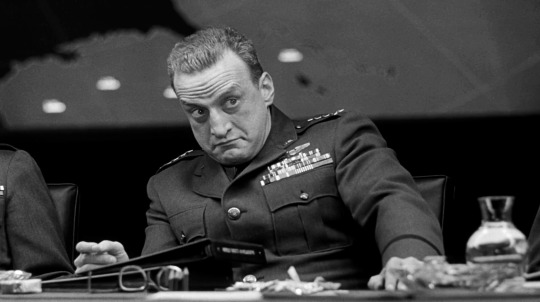



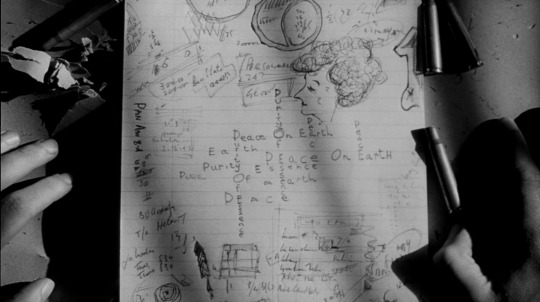
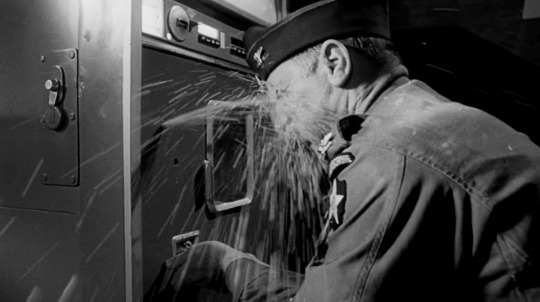
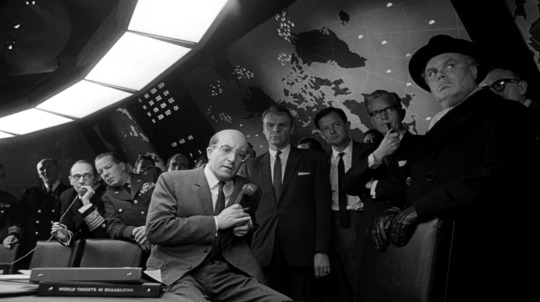

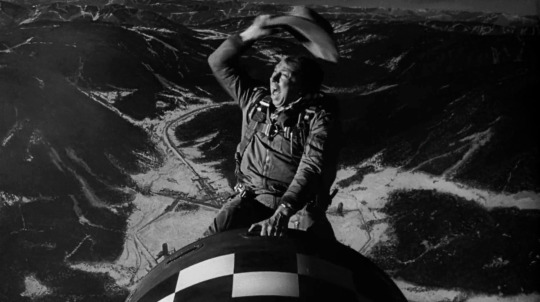
Dr. Strangelove or: How I Learned to Stop Worrying and Love the Bomb (1964)
#dr strangelove#dr strangelove or how i learned to stop worrying and love the bomb#dr strangelove 1964#stanley kubrick#peter sellers#george c scott#sterling hayden#keenan wynn#slim pickens#peter bull#james earl jones#1960s#1964#filmedit#film#cinema#movies
375 notes
·
View notes
Text
old buddies ❤️



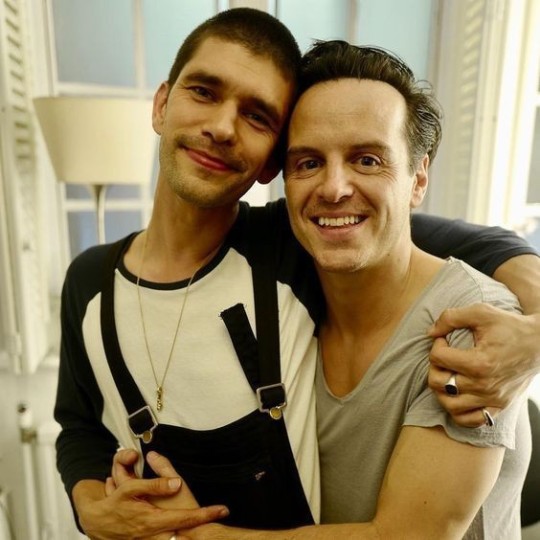
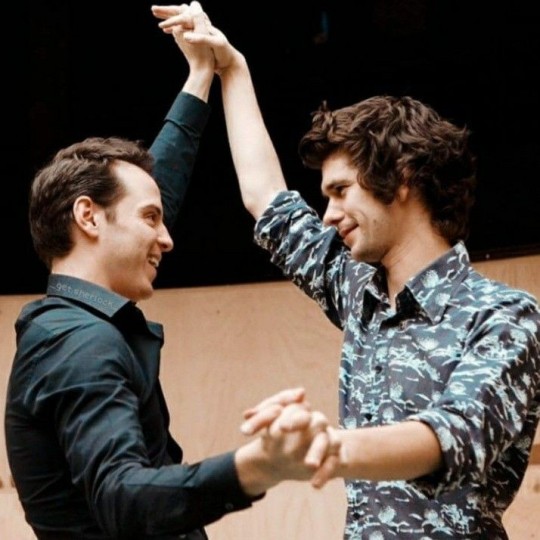

217 notes
·
View notes
Text

Slim Pickens on set of Dr. Strangelove or: How I Learned To Stop Worrying And Love The Bomb (1964)
#dr. strangelove or: how i learned to stop worrying and love the bomb#dr. strangelove#how i learned to stop worrying and love the bomb#1964#stanley kubrick#peter george#peter bryant#peter sellers#george c. scott#sterling hayden#keenan wynn#slim pickens#james earl jones
34 notes
·
View notes
Text



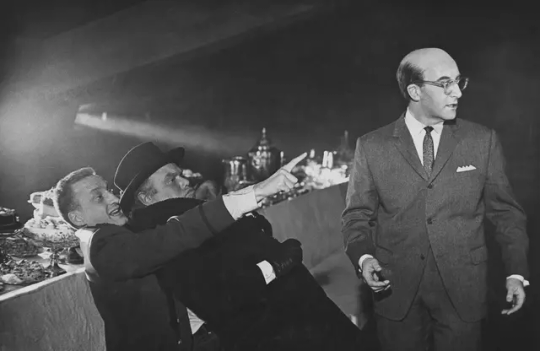


James Earl Jones' very first film was (in my estimation) the best film ever made: Dr. Strangelove or: How I Learned to Stop Worrying and Love the Bomb. Until his passing today, Jones was the last surviving member of the cast of that film.
#james earl jones#stanley kubrick#dr strangelove#how i learned to stop worrying and love the bomb#slim pickens#george c scott#peter sellers#sterling hayden#keenan wynn#peter bull
38 notes
·
View notes
Text




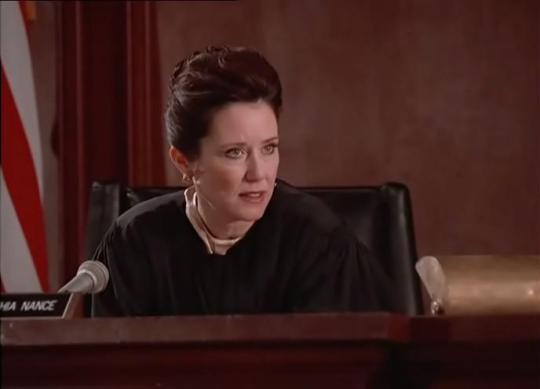

"12 Angry Men" (1997) dir. William Friedkin
#12 angry men#courtney b vance#ossie davis#george c scott#armin mueller-stahl#dorian harewood#james gandolfini#tony danza#jack lemmon#hume cronyn#mykelti williamson#edward james olmos#william petersen#mary mcdonnell
29 notes
·
View notes
Text
[I]n the village, and not only there, classes travel under strange and deceptive banners. They are not apprehended as ghostly, abstract concepts but in the all-too-human form of specific individuals and groups, specific conflicts and struggles. […] [T]he Malay peasant experiences increasing land rents, stingy landlords, ruinous interest rates from moneylenders, combine-harvesters that replace him, and petty bureaucrats who treat him shabbily. He does not experience the cash nexus or the capitalist pyramid of finance that makes of those landlords, combine-harvester owners, moneylenders, and bureaucrats only the penultimate link in a complex process. Small wonder, then, that the language of class in the village should bear the birthmarks of its distinctive origin. Villagers do not call Pak Haji Kadir an agent of finance capital; they call him Kadir Ceti because it was through the Chettiar moneylending caste, which dominated rural credit from about 1910 until World War II, that the Malay peasant most forcibly experienced finance capital. The fact that the word Chettiar has similar connotations fur millions of peasants in Vietnam and Burma as well is a tribute to the homogenization of experience which the capitalist penetration of Southeast Asia brought in its wake. Nor is it simply a question of recognizing a disguise and uncovering the real relationship that lies behind it. For the disguise, the metaphor, is part of the real relationship. The Malays historically experienced the moneylender as a moneylender and as a Chettiar—that is, as a foreigner and a non-Muslim. Similarly, the Malay typically experiences the shopkeeper and the rice buyer not only as a creditor and wholesaler but as a person of another race and another religion. Thus the concept of class as it is lived is nearly always an alloy containing base metals; its concrete properties, its uses, are those of the alloy and not of the pure metals it may contain.
James C. Scott, Weapons of the Weak: Everyday Forms of Peasant Resistance (Yale University Press, 1985), pp. 43–44.
1 note
·
View note
Text



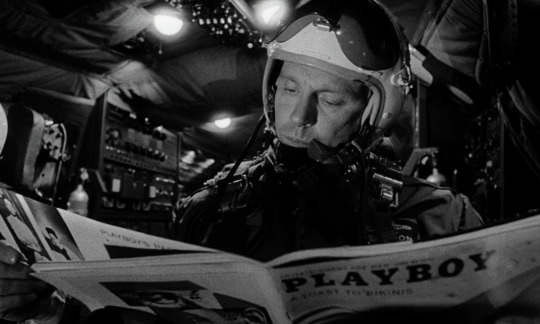
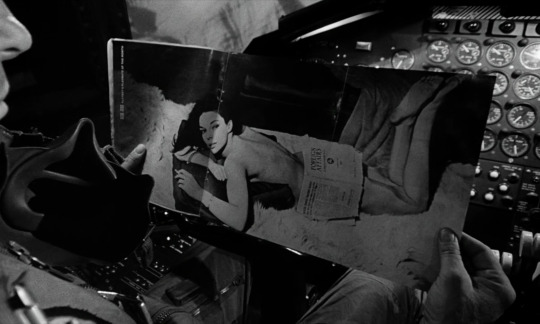

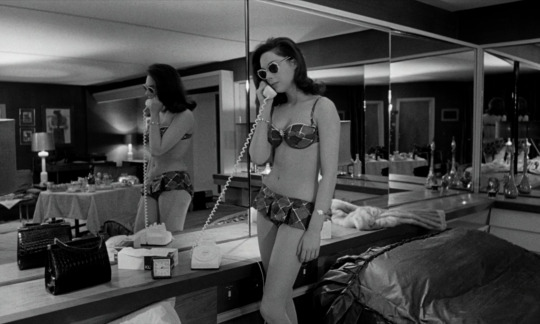



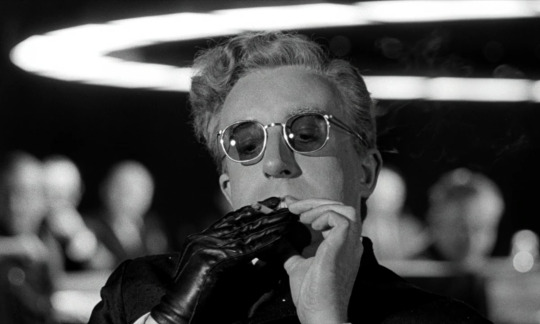
Dr. Strangelove or: How I Learned to Stop Worrying and Love the Bomb (1964) dir. Stanley Kubrick cine. Gilbert Taylor
#Dr. Strangelove or: How I Learned to Stop Worrying and Love the Bomb#Dr. Strangelove#Stanley Kubrick#Gilbert Taylor#Peter Sellers#George C. Scott#Sterling Hayden#James Earl Jones#Tracy Reed#cinema#film#cinematography#screencaps#movies#film stills#my screengrabs#bw film#60s cinema
6 notes
·
View notes
Text
Technocracy is so funny because it's just like, "You know those physics/engineering major types who don't actually understand your field but are convinced that they do and that you're getting it wrong? Yeah, well they're in charge now. Yeah, they seem to think that your farm should be run like an assembly line, you know; neat rows, rote processes, Taylorist management...Yeah, they think that your claims that it won't work are just because you're a superstitious peasant. Anyways, best get picking." And then there's a famine.
84 notes
·
View notes
Text
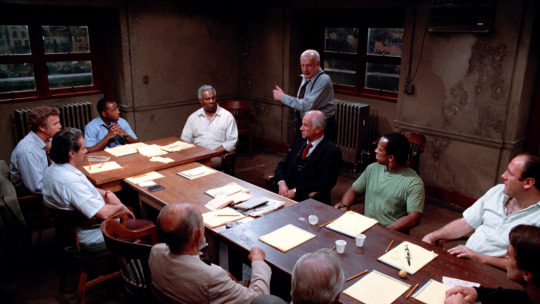
Twelve Angry Men (William Friedkin, 1997)
Cast: Courtney B. Vance, Ossie Davis, George C. Scott, Armin Mueller-Stahl, Dorian Harewood, James Gandolfini, Tony Danza, Jack Lemmon, Hume Cronyn, Mykelti Williamson, Edward James Olmos, William Petersen, Mary McDonnell. Screenplay: Reginald Rose. Cinematography: Fred Schuler. Production design: Bill Malley. Film editing: Augie Hess.
William Friedkin's Twelve Angry Men, which was made for cable television, is not so easily dismissed as an unnecessary remake of Sidney Lumet's classic 1957 film, itself a remake of Reginald Rose's 1954 television drama. Forty years of change have taken place, and although such a jury today would almost certainly have women on it, at least Friedkin's version includes four Black men. One of them, strikingly, is the most virulent racist on the panel: a former Nation of Islam follower played by Mykelti Williamson, who delivers a vicious diatribe against Latinos. Which incidentally brings up another anomaly: There are no Latinos on this jury, even though it is impaneled in New York City, which certainly has a significant Latino population. Oddly, one of the actors, Edward James Olmos, is Latino, but he plays an Eastern European immigrant. The rant of the juror played by Williamson has perhaps even more significance today than it did in 1997, after an election campaign tainted by racist taunts against immigrants: The speech sounds like it might have been delivered at Donald Trump's infamous Madison Square Garden rally. As for the film itself, it retains the 1954 movie's power to entertain, if only the pleasure of watching 12 good actors at peak performance (and in George C. Scott's case, a bit over the peak). It also retains the tendency to preachiness, like a dramatized civics lesson, though maybe we need that more than ever.
#Twelve Angry Men#William Friedkin#Courtney B. Vance#Ossie Davis#George C. Scott#Armin Mueller-Stahl#Dorian Harewood#James Gandolfini#Tony Danza#Jack Lemmon#Hume Cronyn#Mykelti Williamson#Edward James Olmos#William Petersen
5 notes
·
View notes
Text
Watched Dr. Strangelove
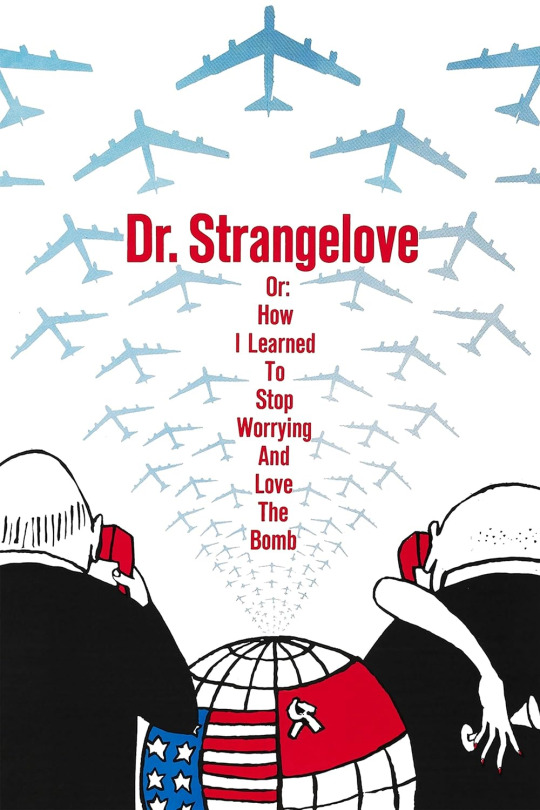
Crass and quite, ahem, straightforward, but basically perfect. Constantly watchable, frequently beautiful. A half dozen performances good enough to steal the show and three of them are Peter Sellers. Don't have a lot to say about this, but yeah you should go watch it. As soon as I got home my dad said "Now you know why RFK is obsessed with fluoride".
#movies#movie review#dr strangelove#strangelove#dr strangelove or how i learned to stop worrying and love the bomb#stanley kubrick#red alert#peter sellers#george c scott#sterling hayden#james earl jones#keenan wynn#1960s movies#1964 movies#1960s
5 notes
·
View notes
